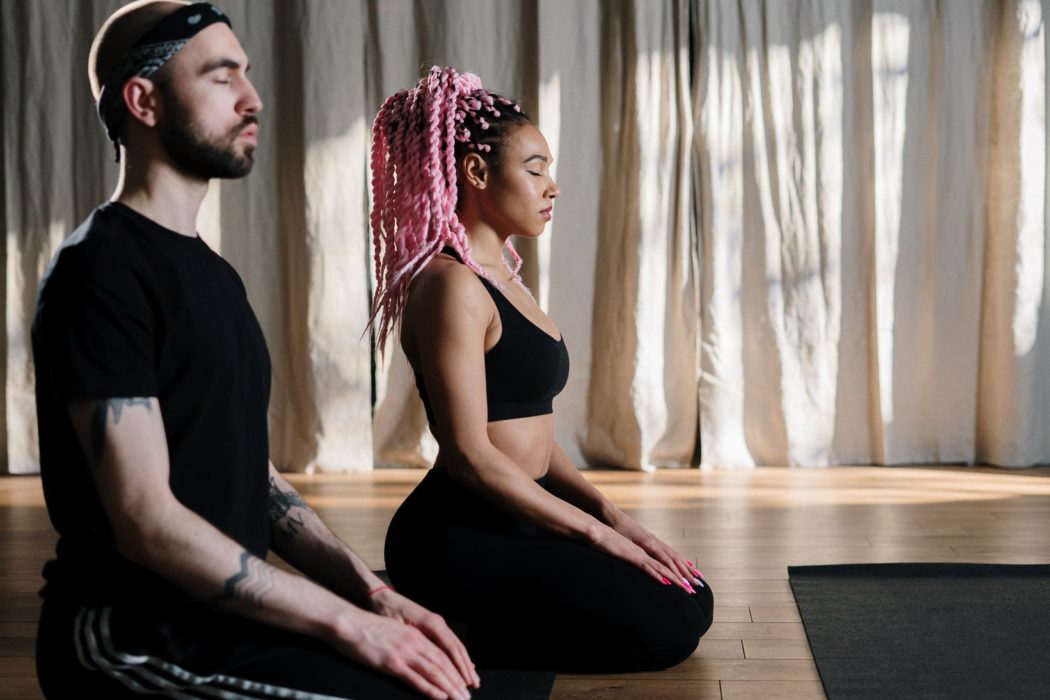“For breath is life, and if you breathe well you will live long on earth.” Sanskrit Proverb
Nutrition and exercise are the first to be scrutinised when it comes to our health; yet it’s easy to overlook the importance of something that we do 25,000 times a day – breathe.
Journalist and author, James Nestor, believes we have lost the ability to breathe correctly, resulting in dire consequences for our health. He discusses this in his new book Breath: The New Science of a Lost Art.
After experiencing recurring pneumonia, Nestor’s doctor recommended he try a breathing class to help strengthen his lungs and calm his mind.
Nestor shares, “I’d been feeling these cracks for much of my life, and chances are you have, too: stuffy noses, snoring, some degree of wheezing, asthma, allergies, and the rest. I’d always thought they were a normal part of being human.”
Nestor was shocked to discover after his first breathing class ended, he was dripping with sweat. The following morning after a surprisingly restful sleep, he felt even better, and wondered what exactly had transpired to induce the intense reaction in his body.
Nestor wanted to learn more, so traveled the globe for answers behind the science of breathing. He first visited Greece and wrote on free diving, which led him to pour over even more research on the breath, and how it can influence longevity, weight loss and overall health.

The Breath
From there, Nestor continued to travel and interview experts, conduct research and learn about ancient breathing practices such as Pranayama and Tummo.
Nestor discovered that information concerning the breath was found in unlikely places such as dental offices and ancient burial sites, rather than in the area of Pulmonology, which specialises in emphysema, cancer or lung collapse, mostly dealing with emergencies.
Scientists discovered, since the Industrial Age, the way we breathe has deteriorated, with 90% of us breathing incorrectly, exacerbating or resulting in a catalogue of chronic disease.
Nestor describes breathing practices as a lost art. Many of these techniques are not new discoveries, but methods which have been around for hundreds and thousands of years.
Researchers have found asthma, psoriasis, attention hyperactivity deficit disorder and anxiety could be reduced or eliminated by adjusting the way we breathe.

Nestor believed this work was “upending long-held beliefs in Western medical science.”
“Breathing in different patterns really can influence our body weight and overall health,” he says.
“Yes, how we breathe really does affect the size and function of our lungs. Yes, breathing allows us to hack into our own nervous system, control our immune response, and restore our health. Yes, changing how we breathe will help us to live longer.”
The Chinese Tao dating back to 400 BCE, the Hindus, and the Buddhists, all valued breathing as a method for healing, both to lengthen life and to reach higher consciousness.
Nestor explains that regardless of age, fitness level, weight or genetic predisposition, nothing will matter unless we are breathing properly.
Mouth Breathing
Breathing is an unconscious act for most, causing this vital pillar of health to be overlooked in chronic disease.

Dr. Jayakar Nayak, a nasal and sinus surgeon from Stanford Department of Otolarynology Head and Neck Surgery Centre, conducts investigations before, during and after one of Nestor’s research endeavours.
To explore the nuances of nasal verses mouth breathing, Nestor plugs his nostrils with silicone for 10 days, only breathing through his mouth.
The results are frightening, and during the mouth-breathing portion of the experiment, Nestor experienced:
- Increased blood pressure.
- Lowered heart rate variability indicating his body was in a state of stress.
- Increased pulse.
- Decreased body temperature.
- Decreased mental clarity.
- Increased snoring by 4820%.
“Mouthbreathing, it turns out, changes the physical body and transforms airways, all for the worse,” Nestor says.
A 2010 study concluded, mouth-breathing throughout critical growth stages in children results in:
- Increased inclination for clockwise rotation of the mandible.
- Decrease in posterior facial height.
- Irregular increase in anterior lower vertical face height.
Nestor explains that snoring isn’t normal, and that any amount of sleep apnoea comes with risks. “Dr. Christian Guillemunault, a sleep researcher at Stanford, found children who experience no apnea events at all-only heavy breathing and light snoring, or “increased respiratory effort”, could suffer from mood disorders, blood pressure derangements, learning disabilities, and more.”
Symptoms of Mouth Breathing
- Dry mouth
- Bad breath
- Snoring
- Dark circles under eyes
- Brain fog
- Fatigue
- Waking irritable and tired
- Hoarseness
“Sleep apnea and snoring, asthma and ADHD, are all linked to obstruction in the mouth,” says Nestor.
Nasal Breathing
Phase Two of the experiment sees Nestor switch pathways, only breathing through his nose.

“Inhaling from the nose has the opposite effect. It forces air against all those flabby tissues at the back of the throat, making the airways wider and breathing easier. After a while, these tissues and muscles get “toned” to stay in this opened and wide position. Nasal breathing begets more nasal breathing.”
During the nasal breathing portion of his experiment, Nestor reported:
- Blood pressure 20 points lower than its highest point.
- Increased heart rate variability.
- Increased energy.
- 4000% decrease in snoring from 10 days prior.
- Sleep apnoea became non-existent.
How does nasal breathing have so many advantages?
- The nose becomes a filter to particles in the air.
- Adds moisture to the air, preventing dryness.
- Warms up air to body temperature.
- Adds resistance to the air stream, maintaining lung elasticity and increasing oxygen uptake.
While breathing is an unconscious act and a body function we rely on, its significance can easily be overlooked.
As Nestor states: “Everything you or I or any other breathing thing has ever put in its mouth, or in its nose, or soaked in through its skin, is hand-me-down space dust that’s been around for 13.8 billion years.”
“This wayward matter has been split apart by sunlight, spread throughout the universe, and come back together again.
“To breathe is to absorb ourselves in what surrounds us, to take in little bits of life, understand them, and give pieces of ourselves back out. Respiration is, at its core, reciprocation.”




